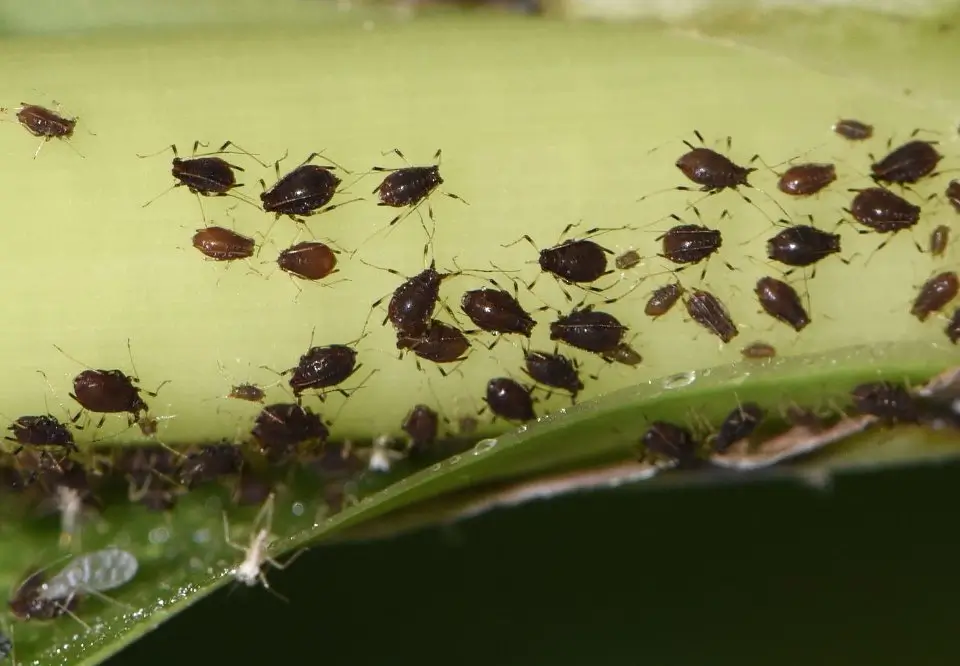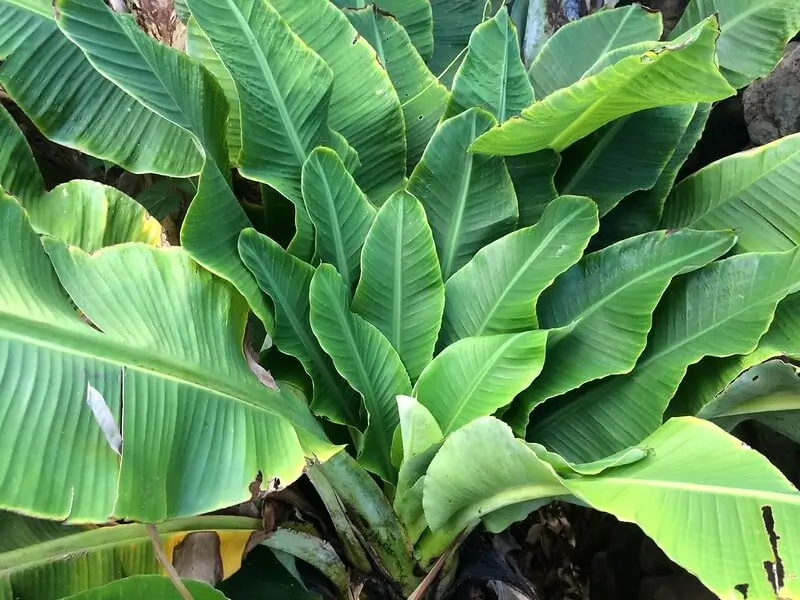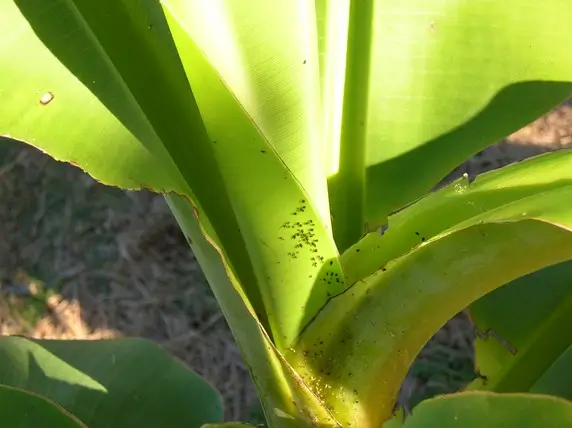Banana plants are known for their nutritious fruits and are more prone to pests like banana aphids. These aphids not just feed on the plants and fruits but also cause deadly diseases like Banana Bunchy Top Disease (BBTD) and Banana Bract Mosaic Virus (BBMV). These diseases can significantly impact banana yield and quality.
Therefore keeping an eye on these banana aphids to protect banana plantations from the viral diseases they cause.
2 Deadly Diseases Transmitted by Banana Aphids
Aphids, particularly the banana aphid (Pentalonia nigronervosa), are tiny but mighty pests when considered the damage they can cause. Both nymphs and adult banana aphids can transmit viruses to banana plants, with transmission rates for individual aphids ranging from 46-67%.

- Banana Bunchy Top Disease (BBTD)
- Banana Bract Mosaic Virus (BBMV)
Banana Bunchy Top Disease (BBTD)
Symptoms of BBTD
The symptoms of BBTD are quite distinctive. Initially, dark green streaks appear in the veins of the lower portion of the leaf midrib and the leaf stem. These streaks can be seen as dark green dots or patches with the margins rolled upward. As the disease severity increases, the leaves emerge in clusters, giving the plant a rosette or “bunched” appearance, which is where the disease gets its name.

Severely infected plants are stunted and rarely produce fruit. If they do, the fruits are usually distorted and twisted. The leaves become brittle and much reduced in size, often showing dark green spots and streaks along the veins and midrib. These symptoms are particularly noticeable in the Cavendish subgroup of banana cultivars.

BBTD Spread and Development
As Banana Bunchy Top Virus (BBTV) is mainly spread by banana aphids, these little pests pick up the virus after feeding on an infected banana plant for just a few hours, usually around 18 hours. Once they’ve got the virus, they can carry it for their entire adult life, which is about 15-20 days.
During this time, they can infect healthy banana plants with BBTV. It only takes as little as 15 minutes, though usually around two hours of feeding on a new plant, to pass on the virus. The symptoms of this disease typically show up about a month after the plant gets infected. So, it’s crucial to keep an eye on your banana plants and control these aphids to prevent the spread of BBTV.
How to Control Banana Bunchy Top Disease?
- Start with healthy, certified virus-free banana suckers or tissue culture plants to prevent initial infection.
- You must be aware of the external symptoms and the infected plants should be cut and burnt as and when noticed
- Keep banana fields free from weeds and alternate hosts that can harbour aphids and the virus.
- Regularly spraying systemic insecticides like Imidacloprid or Neem-based products to control banana aphid populations. This helps reduce virus transmission. However, always consult experts before proceeding with spraying.
- Since the only host of BBTV is banana, roguing infected trees helps in reducing the spread of the disease.

Mosaic Disease in Banana
Banana Bract Mosaic Virus (BBMV), also known as Kokkan disease, is another major threat to banana plants. This virus is transmitted through banana aphids and infected suckers, causing severe damage to the plant and fruit. This disease can cause a huge yield loss that is up to 70%. Banana bract mosaic virus harms banana plants, causing bunches to form poorly and fingers to stay small. This can reduce the bunch weight by up to 40%.
Symptoms of Mosaic Disease on Banana
BBMV is characterized by the presence of spindle-shaped pinkish to reddish streaks on the pseudo stem, midrib, and peduncle. The characteristic mosaic and spindle-shaped reddish-brown mild mosaic streaks appear on the bracts of the inflorescence, peduncle and fingers. Infected plants often have a “traveler’s palm” appearance due to the clustering of leaves at the crown.

In the Nendran variety, the leaves show spindle streaks with a waxy coating on the lower side.
In Robusta, infected plants produce pencil-sized fruits, locally known as “pencil kai”.
BBMV Spread and Development
Banana bract mosaic virus affects banana plants during all stages—when they are growing, flowering and even when they are fruiting. This virus is spread by banana aphids, tiny insects that pick up the virus while feeding on infected plants. However, the virus doesn’t stay in the aphids for long and is passed on quickly.
What’s more concerning is that banana plants can get infected by both the banana bract mosaic virus and the banana bunchy top virus at the same time, since both are transmitted by the banana aphid. This double infection can be particularly harmful to the plants.
Management Practices to Control Mosaic Disease
- Similar to BBTD, start with healthy, certified virus-free planting materials.
- Regularly inspect banana plants and remove any infected ones promptly.
- Keep the fields and surrounding areas free from weeds that can harbour the virus.
- Use systemic insecticides like Phosphamidon or Methyl Demeton to control banana aphid populations. Regular sprays at intervals help keep aphid numbers in check. However, always consult experts before proceeding with spraying.
Banana plants are an essential part of our diet and agriculture, but they face significant threats from diseases like Banana Bunchy Top Disease (BBTD) and Banana Bract Mosaic Virus (BBMV). Understanding the symptoms and management practices for these diseases is crucial for maintaining healthy banana crops.
Learn how to control sucking pests in cotton from our previous blog